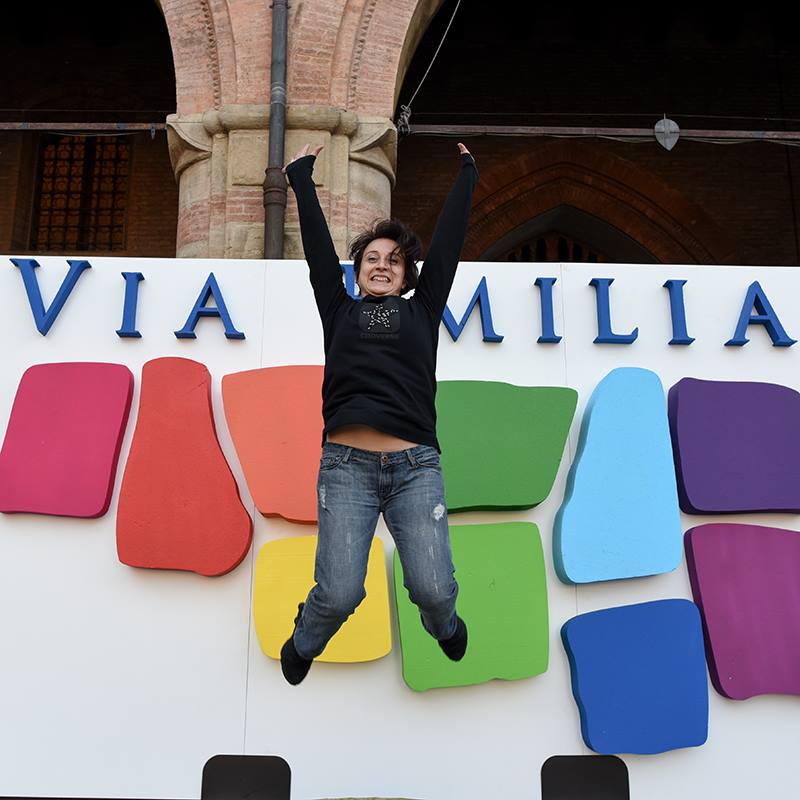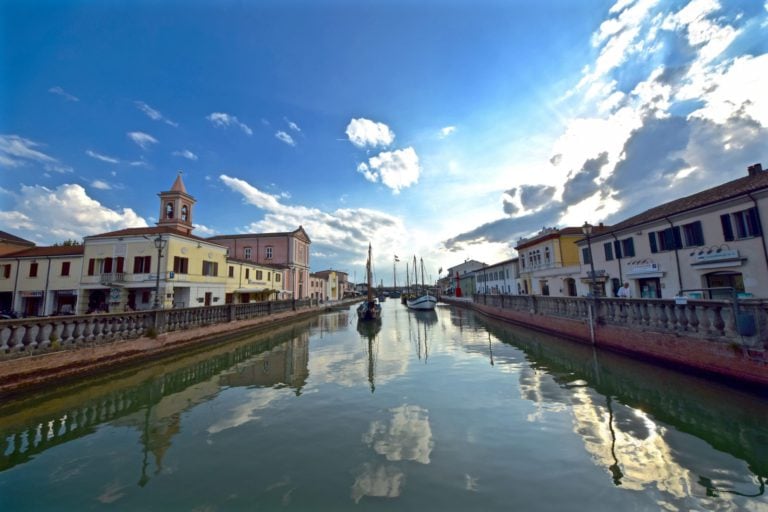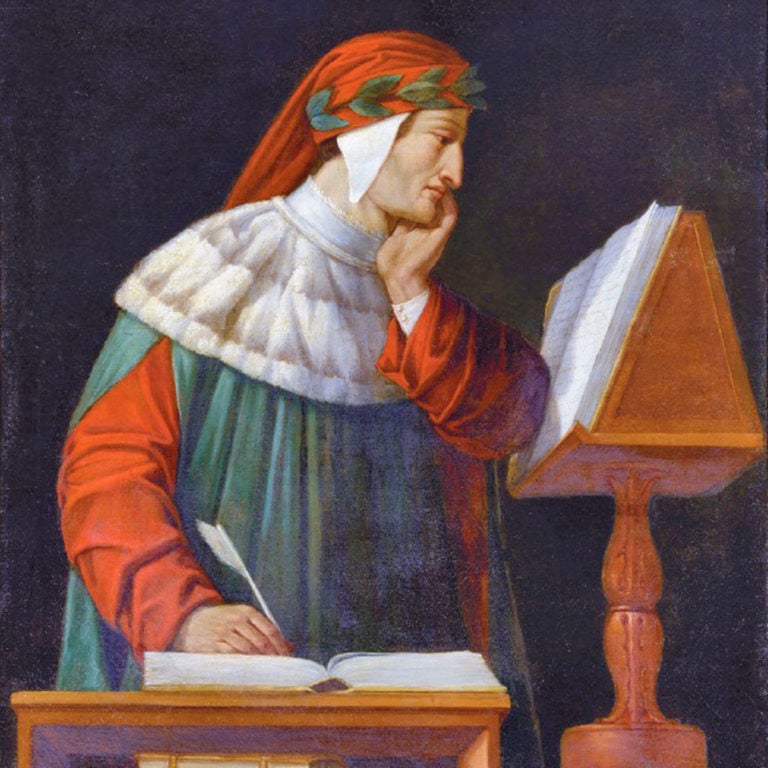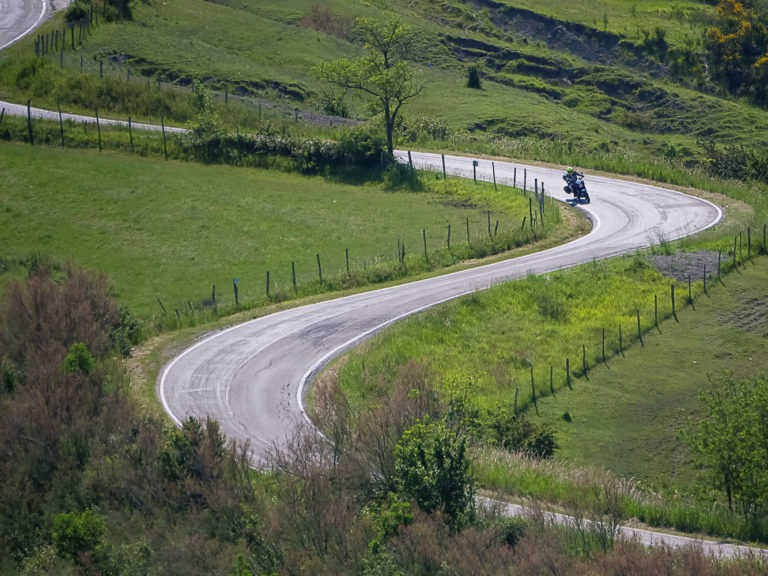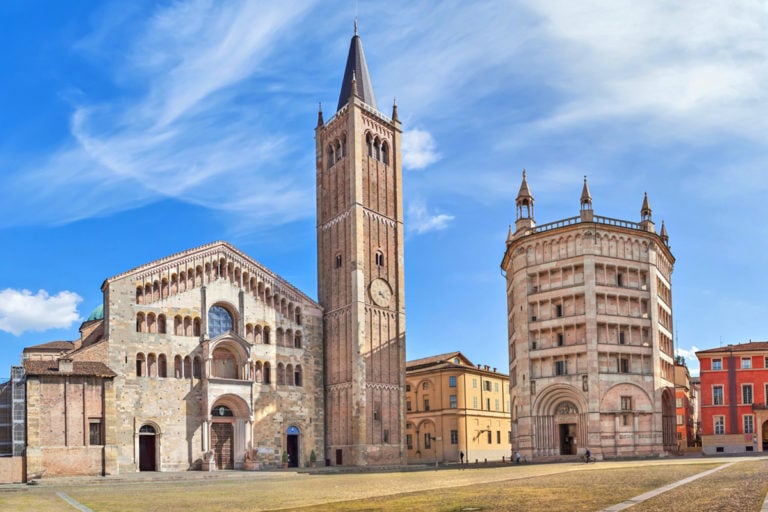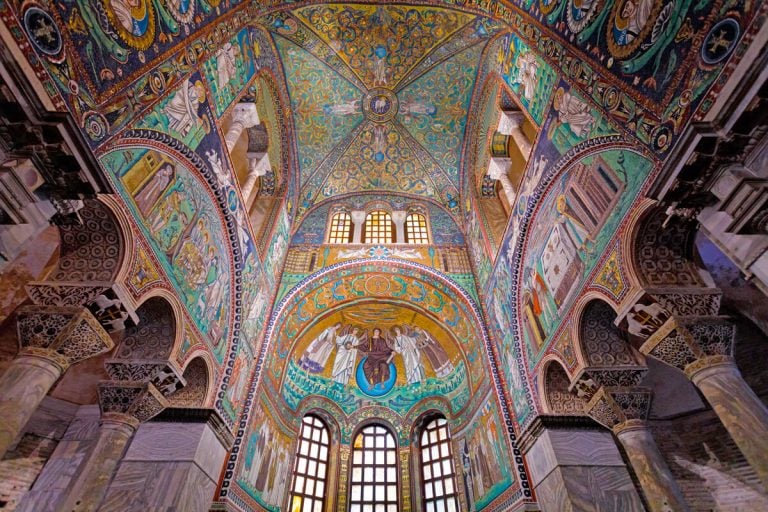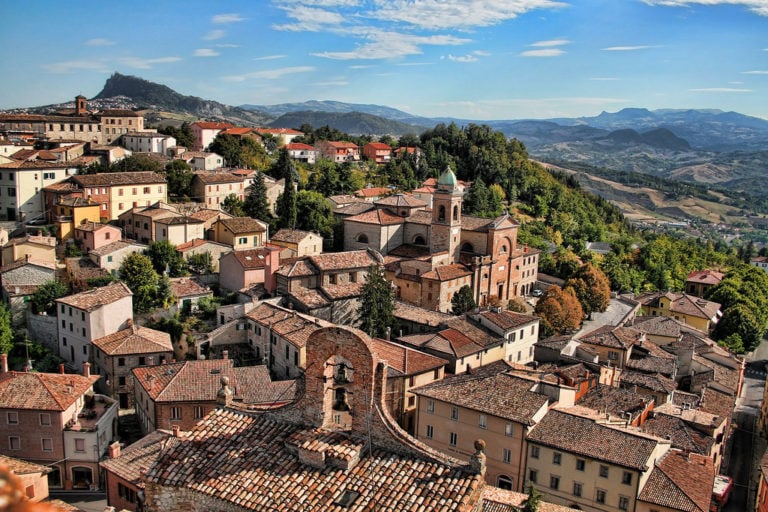After exploring the vibrant street art scene in Emilia-Romagna, it’s time to embark on a truly unique cultural journey.
Following in the footsteps of nine of Italy’s greatest artists, you’ll uncover extraordinary masterpieces housed in museums, galleries, and churches scattered across the region.
While Emilia-Romagna may not feature renowned institutions such as the Uffizi in Florence, the Brera in Milan, or the Borghese Gallery in Rome, it is a treasure trove of artistic wonders. Here, you can admire works by timeless geniuses such as Leonardo da Vinci, Raphael, Canova, Bernini, Botticelli, Piero della Francesca, Correggio, Guercino, and Guido Reni—often in quieter, yet equally enchanting, settings steeped in history.
Prepare to be captivated by the timeless beauty of these masterpieces, free from the hustle and long queues that often accompany more famous institutions. Take your time to savor every detail, immersing yourself in an atmosphere of serenity and reflection.
Emilia-Romagna invites you to discover the brilliance of Italy’s greatest artists. Let the adventure begin!
Sandro Botticelli - Piacenza
Artist: Sandro Botticelli
The unmissable masterpiece: Tondo of the Virgin adoring the Child with the infant St. John (1475 approx)
Where: Palazzo Farnese (Piacenza)
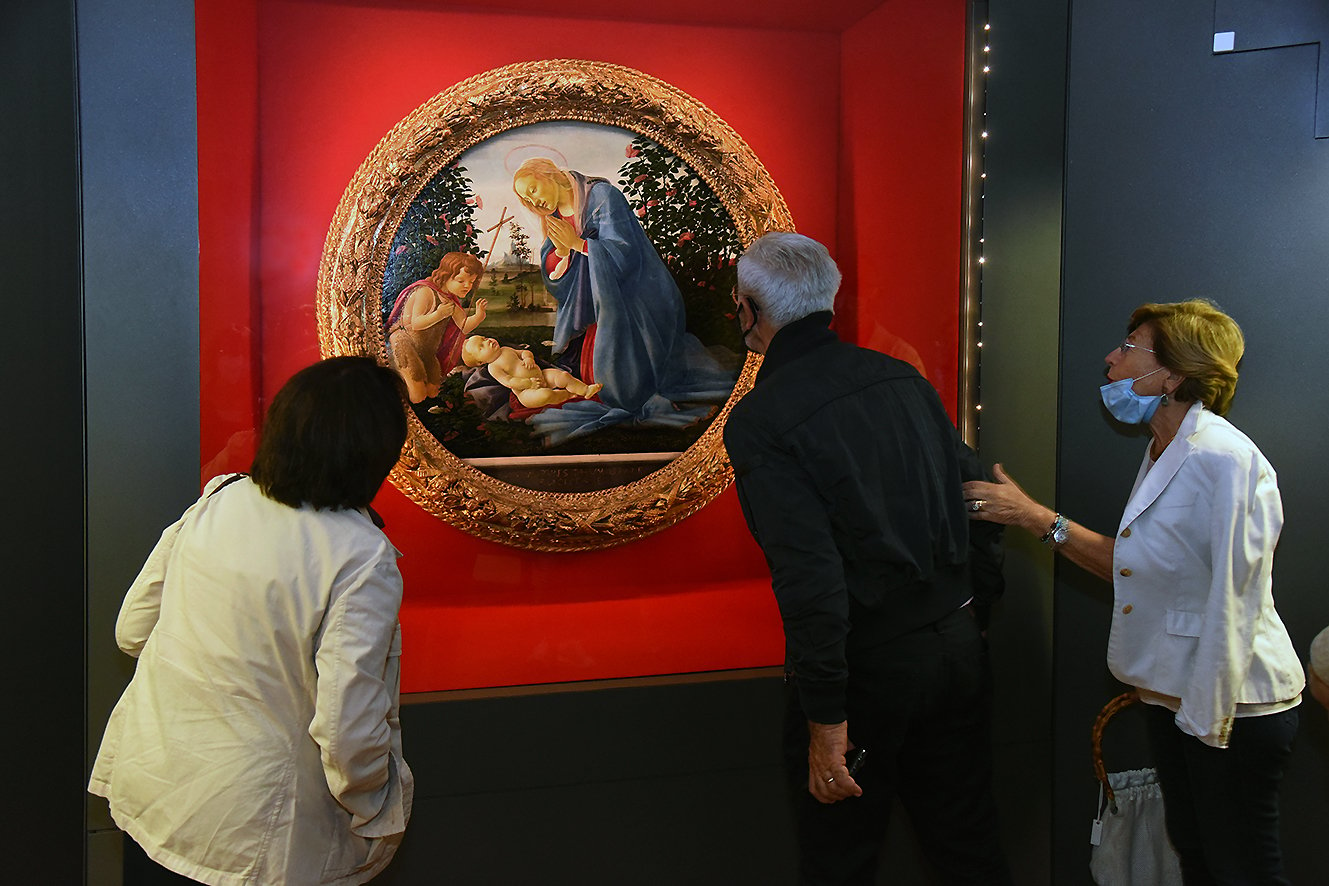
Located on the first floor of the majestic Farnese Palace, the Piacenza Art Gallery houses an authentic treasure: a precious Tondo by Botticelli, depicting the Madonna adoring the Child with Saint John the Baptist.
This masterpiece, created about thirty years before the famous Tondo Doni housed in the Uffizi Gallery, holds a unique historical and artistic value. According to tradition, Botticelli drew inspiration from a 14th-century apocryphal text by Giovanni De Cauli from San Gimignano, which describes Saint John in an adoring posture towards the Christ Child.
Visitors are immediately captivated by the stunning original frame, intricately carved and gilded. It perfectly centers the sacred scene, giving it an extraordinary aura of elegance and reverence.
Insider Tip: If you’re planning to visit Piacenza, aim to arrive at the museum’s opening hours, either in the morning or afternoon. This will allow you to explore the entire Farnese Palace Civic Museum complex at your own pace. Highlights include the evocative Carriage Museum, the Risorgimento Museum, the Archaeological Museum, and the spectacular Armory Hall.
A Bonus Masterpiece in Town: Don’t miss another artistic gem: Antonello da Messina’s Ecce Homo, housed at the Alberoni College. This is one of the Sicilian master’s most intense and evocative works.
→ Discover Piacenza and let its austere, aristocratic charm enchant you.
Leonardo da Vinci - Parma
Artist: Leonardo da Vinci
The unmissable masterpiece: Testa di fanciulla, detta “La scapiliata” (1508)
Where: Complesso della Pilotta (Parma)
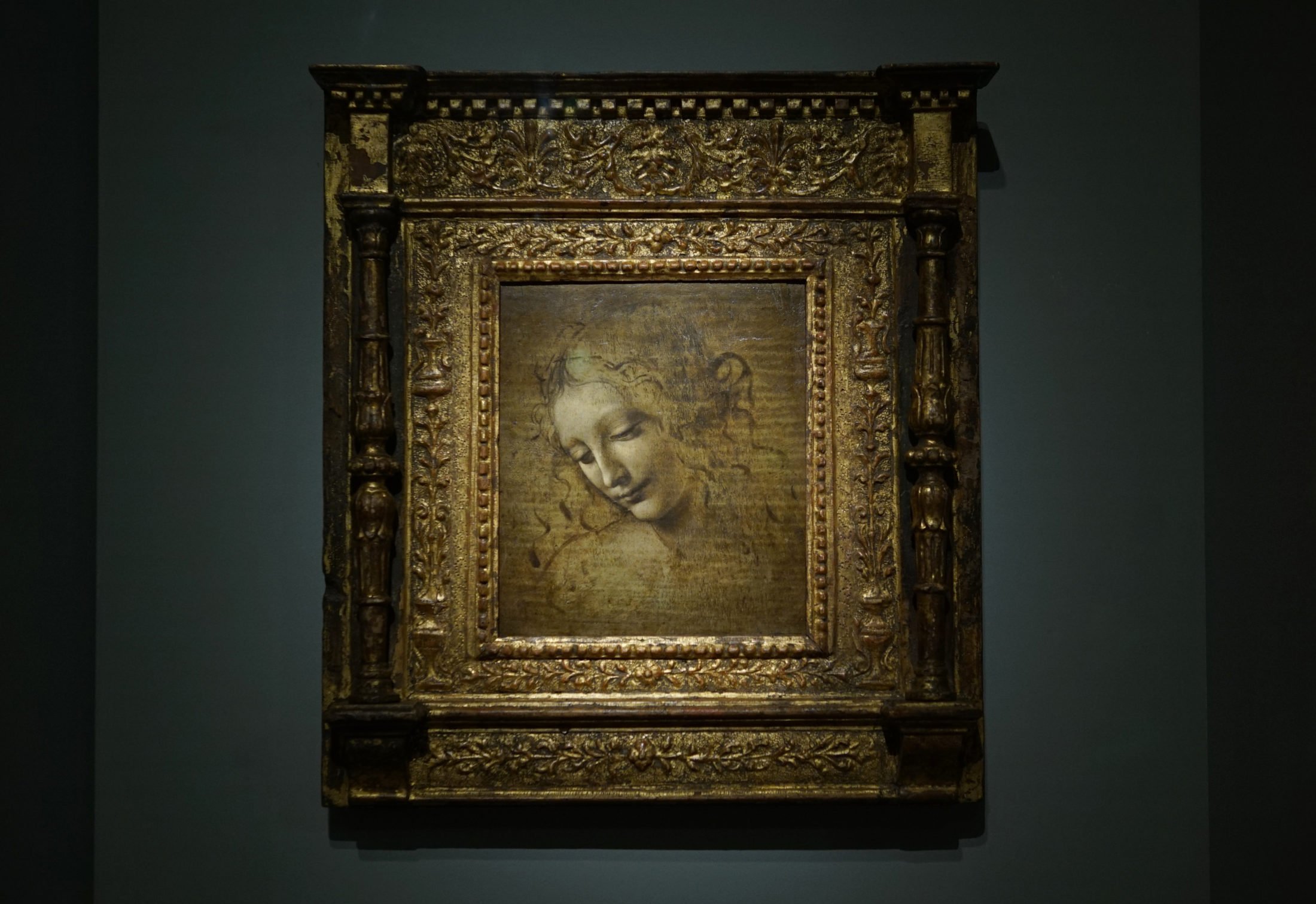
The National Gallery of Parma houses a rare and precious testament to Leonardo da Vinci’s presence in Emilia-Romagna: La Scapigliata.
This extraordinary work stands as a true masterpiece within the Maestro’s oeuvre, showcasing Leonardo’s distinctive traits of creative freedom and the celebration of femininity.
Contrary to what one might assume, La Scapigliata is not merely a drawing or preparatory sketch but a monochromatic painting on panel.
Recently enhanced by an antique frame, the painting is displayed against a grey metallic surface, which highlights its delicate gold and brown tones. This contrast lends the piece an air of elegant sobriety and timeless allure.
Insider Tip: After purchasing your ticket to the Gallery, take your time exploring each room attentively, as if you were at the Prado Museum in Madrid. We bet you’ll be captivated!
Bonus Artistic Excursion: If time permits, make a stop in Fontanellato to admire Parmigianino’s enchanting fresco cycle in the Stufetta di Diana e Atteone, located within the Rocca Sanvitale.
→ Discover all the secrets of Parma and let yourself be inspired!
Correggio - Correggio (Reggio Emilia)
Artist: Correggio
The unmissable masterpiece: Pietà (1512 about)
Where: Museo Civico “Il Correggio” (Correggio – RE)
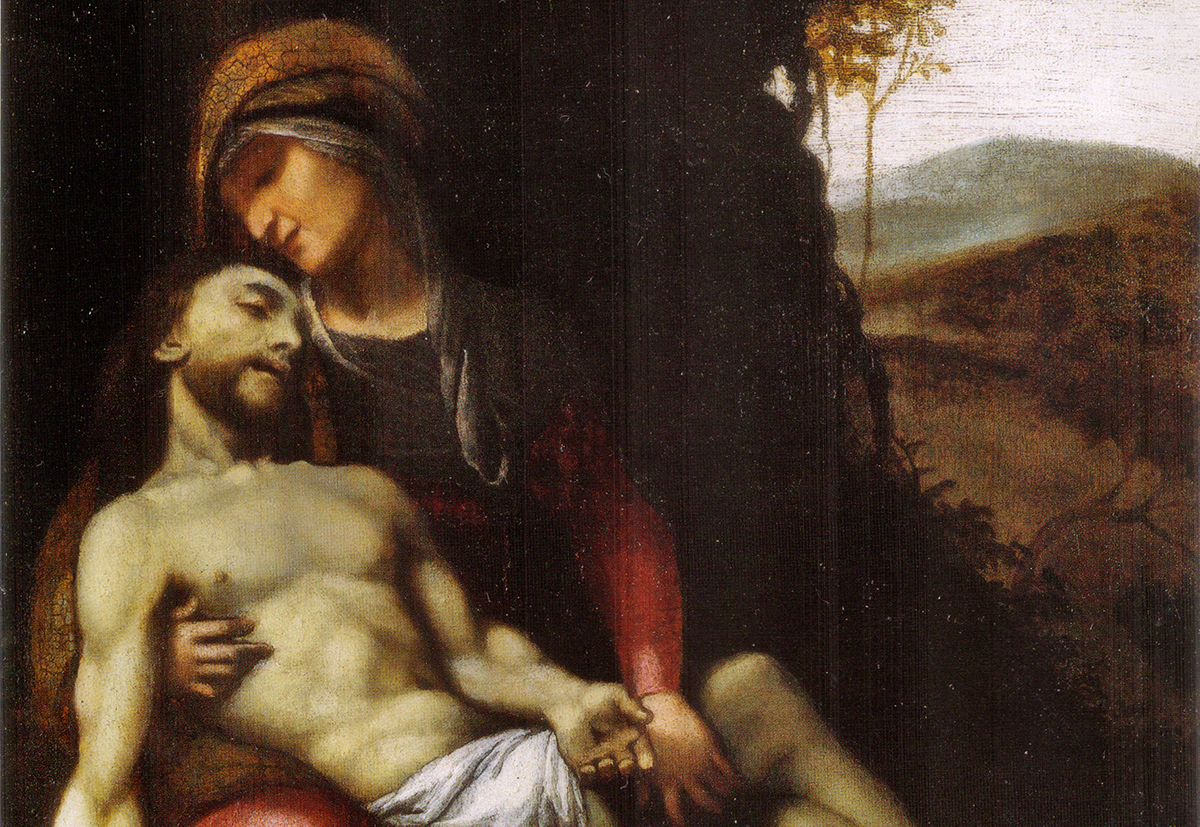
In the heart of the town of Correggio, on the noble floor of the striking Palazzo dei Principi, stands the Museo Civico, which houses a precious oil painting attributed to the renowned artist Antonio Allegri, better known as Correggio: The Pietà.
The painting, characterized by evident Leonardo-like influences, is dated to before 1514. The subject stands out within Correggio’s artistic output for its originality: Christ is depicted in a dynamic pose, with one arm hanging loosely and the other folded across His abdomen, while His crossed legs are embraced by the Madonna.
The complexity of the composition lends the image an emotional intensity that commands attention.
The significance of this work is highlighted by the numerous copies made over the centuries, including one by Annibale Carracci.
It is believed that the painting’s popularity may stem from its potential display in a prominent public space, such as the chapel in the Palazzo dei Principi, facing the so-called “campo d’onore” of the nearby Castello di Correggio, where duels once took place. In the past, it was customary to swear oaths before sacred images during reconciliations.
Tip: In addition to this extraordinary piece, you can also admire two other works attributed to Correggio, both on display at the museum with free entry: Head of Christ (c. 1519–1520) and the valuable Double-Sided Drawing (c. 1526).
Extra artwork nearby: If you wish to continue your artistic journey, a short distance away, the Basilica della Ghiara in Reggio Emilia houses a stunning altarpiece by Guercino depicting the Crucified Christ. This masterpiece, one of the artist’s most admired and discussed works, is a true gem of Baroque painting.
→ Discover more about the cities of Correggio and Reggio Emilia.
Gian Lorenzo Bernini - Modena
Artist: Gian Lorenzo Bernini
The unmissable masterpiece: Bust of Francesco I d’Este (1650-1652)
Where: Gallerie Estensi (Modena)
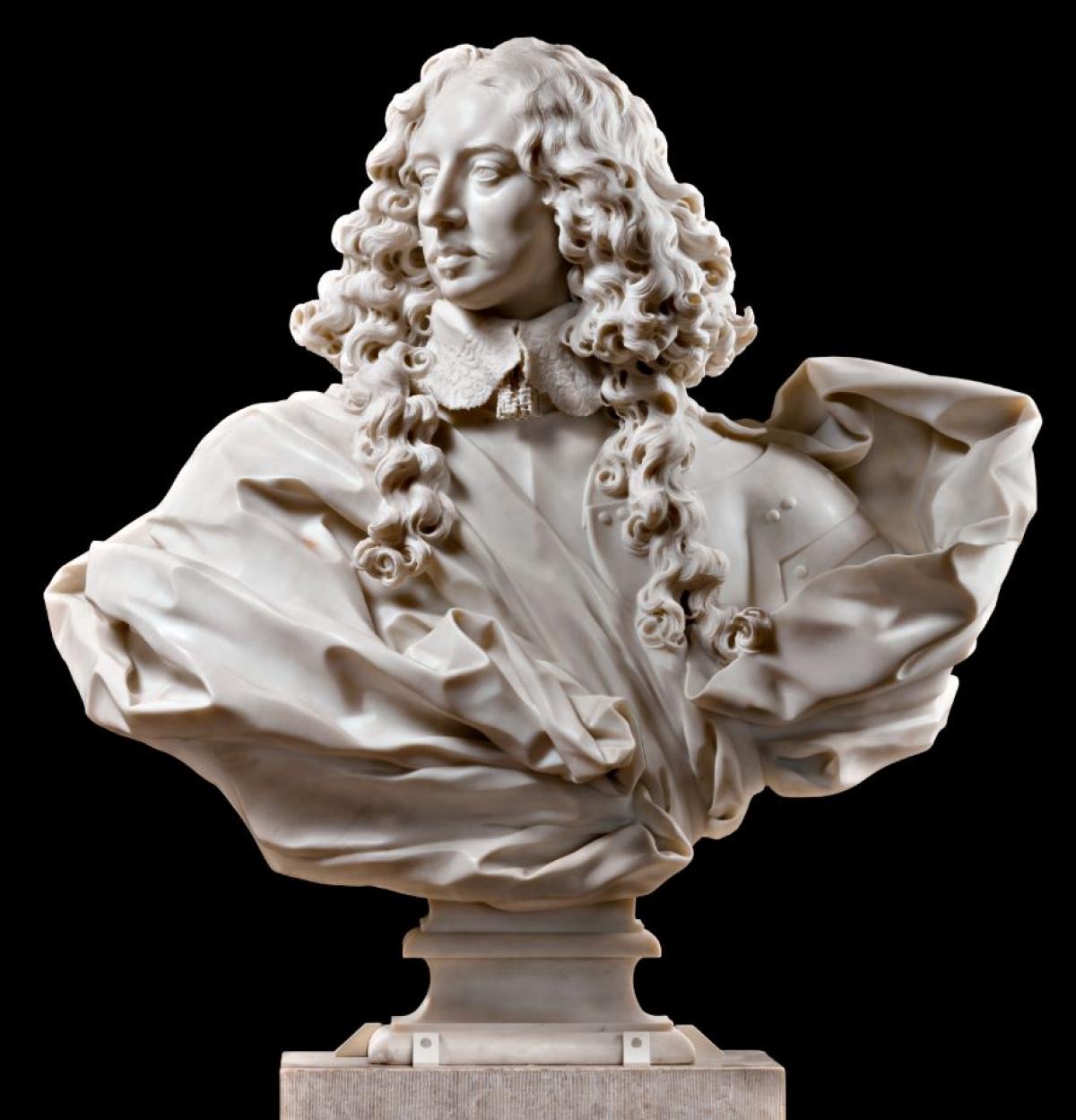
The sculpture of Francesco I d’Este by Gian Lorenzo Bernini is part of a collection of artworks that once belonged to the Este Dukes and, since 1894, has been displayed at its current location within the Gallerie Estensi, housed inside the Palazzo dei Musei in Modena.
Commissioned in August 1650 by Francesco I d’Este, the work was created by Bernini who, although initially reluctant, never met the Duke in person. The artist relied on earlier paintings to portray the subject but was able to obtain the exact measurements for the Duke’s height and shoulder width to ensure a greater degree of realism.
Despite the “objective” challenges Bernini faced while creating the piece, the marble sculpture appears extraordinarily light, thanks to secondary elements like the wig and the cloak, which lend a sense of movement and fluidity.
Tip: As the Gallery is an integral part of the Gallerie Estensi complex, be sure to take the opportunity to visit Modena’s Biblioteca Estense Universitaria and Museo Lapidario; just outside Modena, you can also explore the Palazzo Ducale in Sassuolo and the Pinacoteca Nazionale in Ferrara.
Extra art in the city: In addition to Bernini’s sculpture, the Gallery also houses ceilings painted by Tintoretto, inspired by Ovid’s Metamorphoses.
→ Discover more about Modena: a city that blends motors, top-quality food and wine, and a rich cultural heritage!
Raphael (Bologna)
Artist: Raphael
The unmissable masterpiece: The ecstasy of St Cecilia (1518)
Where: Pinacoteca Nazionale di Bologna
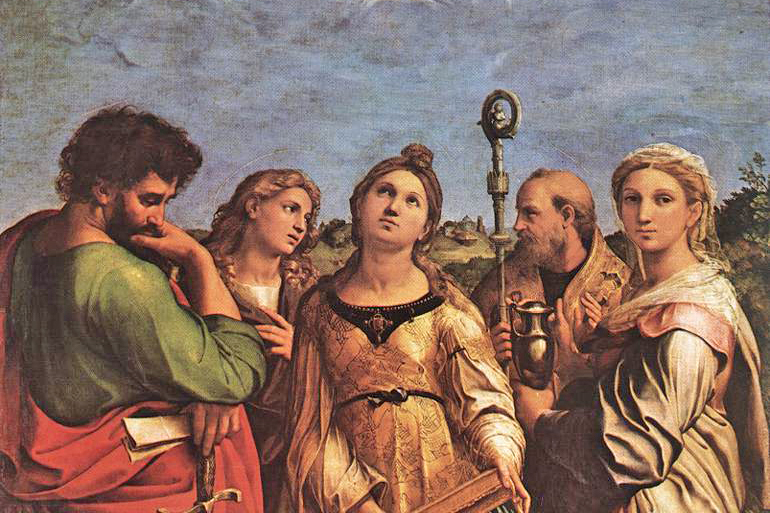
The Ecstasy of Saint Cecilia was commissioned to Raphael by a noblewoman from Bologna for the chapel dedicated to the saint, located in the Church of San Giovanni in Monte.
The connection with the city of Bologna is clearly visible in the church’s profile in the background of the painting, which is thought to resemble that of Santa Maria del Monte.
This masterpiece is extraordinarily innovative, as Raphael departs from the traditional depiction of the divine, focusing instead on the theme of “ecstasy” as the central subject of the scene. Stolen during the Napoleonic looting, the painting returned to Italy in 1815.
The fame of this oil on canvas work is evidenced by the numerous copies made over time by renowned artists such as the Carracci and Guido Reni.
Recommendation: Spend an entire day exploring the Pinacoteca Nazionale di Bologna – Raphael’s masterpiece is not the only reason to purchase a ticket!
Extra Artwork in the City: Don’t miss a visit to the Basilica di San Domenico, where you can admire some works by Michelangelo Buonarroti. The Tuscan genius created the statues of Saint Petronius, Saint Proculus, and the Angel holding a candelabrum, which adorn the imposing Arca di San Domenico, the saint’s monumental tomb.
→ Discover more about Bologna, the city famous for its porticoes and towers!
Guercino (Cento)
Artist: Guercino
The unmissable masterpiece: Madonna col Bambino benedicente, detta Madonna dei Cappuccini (1629)
Where: Civica Pinacoteca il Guercino (Cento)
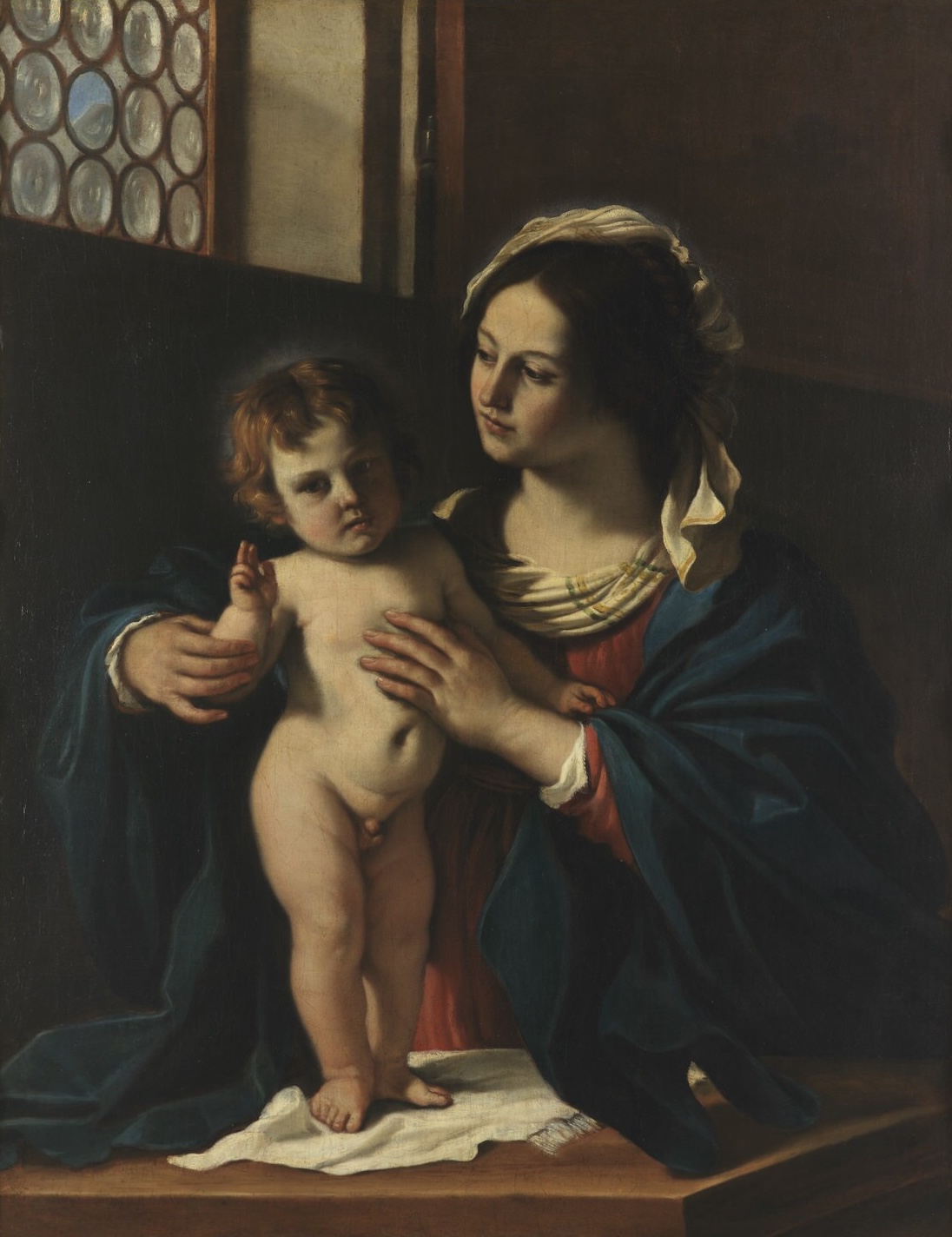
The Madonna with Child Blessing, also known as the Madonna dei Cappuccini, is a painting created by Guercino in 1629, currently housed in the Civica Pinacoteca Il Guercino in Cento.
The artwork depicts an intimate family scene: the Virgin Mary holds the Child, who is portrayed in the act of blessing, with extraordinary attention to detail and the delicate folds of the drapery.
This masterpiece reflects the stylistic maturity reached by the artist, influenced by his Roman experience, and characterized by a refined compositional balance and innovative use of light. Noteworthy is the detail of the window in the background, through which a clear sky is visible, lending the entire scene a peaceful and serene atmosphere.
The canvas, stolen by Napoleon’s soldiers and later recovered, is now one of the most significant pieces in the pinacoteca. If you are passionate about art and eager to discover the allure of Baroque painting, a visit to this collection is a must!
Tip: Following the earthquake that struck Emilia-Romagna in 2012, the pinacoteca was restored and now stands completely renewed. It is an incredible space, both for the wealth and variety of its artworks. In addition to Guercino’s masterpieces, visitors can admire a vast collection of paintings, sculptures, prints, and frescoes.
Extra Artwork in Town: The Civic Pinacoteca San Lorenzo in Cento is a place of great charm and importance. It permanently houses the paintings Guercino created for the Church of the Holy Rosary in Cento, a place of worship to which the artist was deeply connected, as well as other works linked to Emilia-Romagna’s painting tradition.
→ Discover more about Cento, Guercino’s birthplace, and nearby Ferrara, the city of the Este family, with its beautiful castle and the fascinating Pinacoteca Nazionale.
Guido Reni (Ravenna)
Artist: Guido Reni
The unmissable masterpiece: Moses and the Gathering of Manna (1614 – 1616)
Where: Ravenna Cathedral
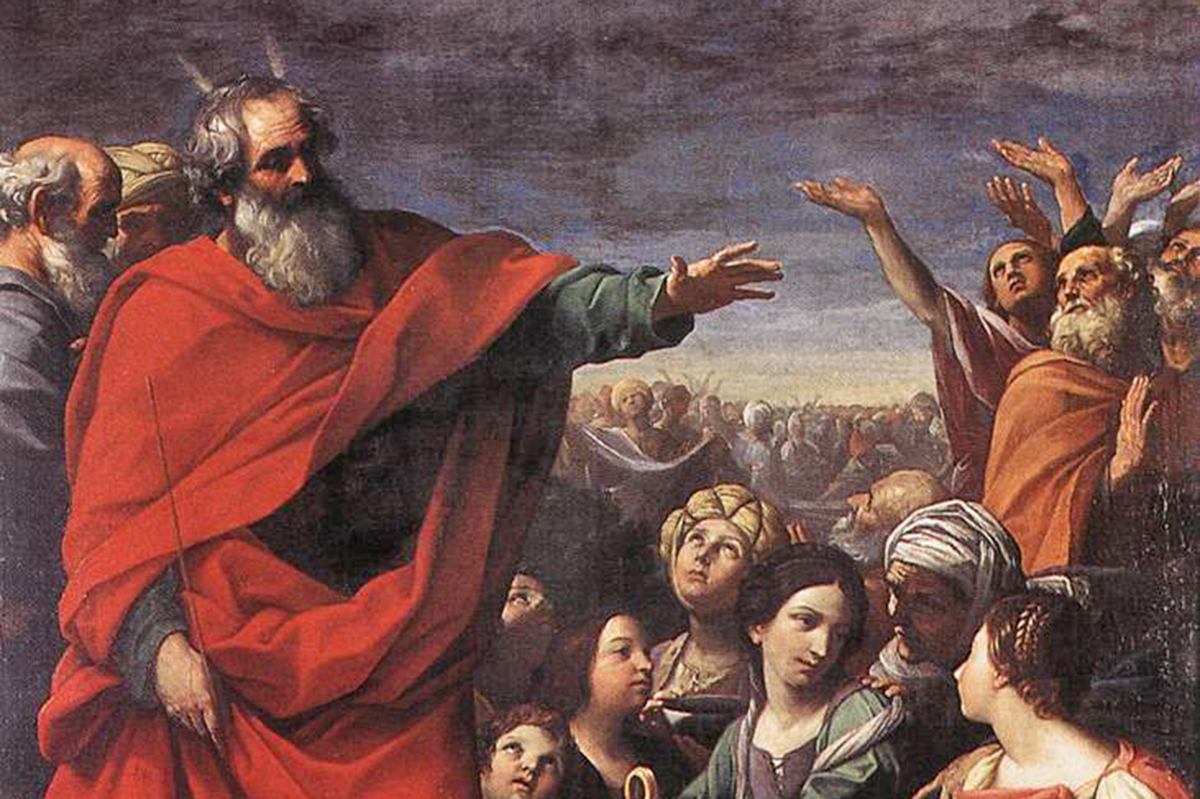
Many artists have tackled the representation of the theme of manna gathering, the “food of angels” given by God to the people of Israel during their exodus in the desert.
Guido Reni, one of the leading figures of Italian Classicism, addresses this subject with a striking fresco, preserved in the Chapel of the Blessed Sacrament in the Cathedral of Ravenna.
The painting, entitled Moses and the Gathering of Manna is characterized by a crowded and dynamic composition, with the central figures standing out: Moses, draped in a wide red mantle, leads the people, while men and women gather the miraculous food in bowls and amphorae.
The scene conveys the gratitude and relief of the Israelites, capturing the moment when divine providence intervenes to aid their journey. Reni’s masterful use of light and color gives the figures a solemn yet human aura, typical of his style.
Fun fact: Moses’ famous “horns,” visible in the fresco, may have resulted from a translation error. In some ancient versions of the Bible, the Hebrew word “karan” (rays) was confused with “keren” (horns). In the Book of Exodus (34:29), it is stated that Moses’ face shone after speaking with the Lord, symbolizing his divine closeness.
Tip: If you’re a fan of ancient art, don’t miss the UNESCO monuments in Ravenna. For those more interested in art, painting, and sculpture from the Middle Ages to the modern era, a visit to the MAR – Ravenna Art Museum is a must!
Extra artwork in the province: the village of Brisighella houses, among the collections of the “G. Ugonia” Civic Museum, the magnificent altarpiece by Guercino St. Francis of Assisi and St. Louis of France.
→ Discover more about Ravenna, the splendid world capital of mosaic art.
Antonio Canova (Forlì)
Artist: Antonio Canova
The unmissable masterpiece: Hebe (1816 – 1817 approx)
Where: Musei San Domenico (Forlì)
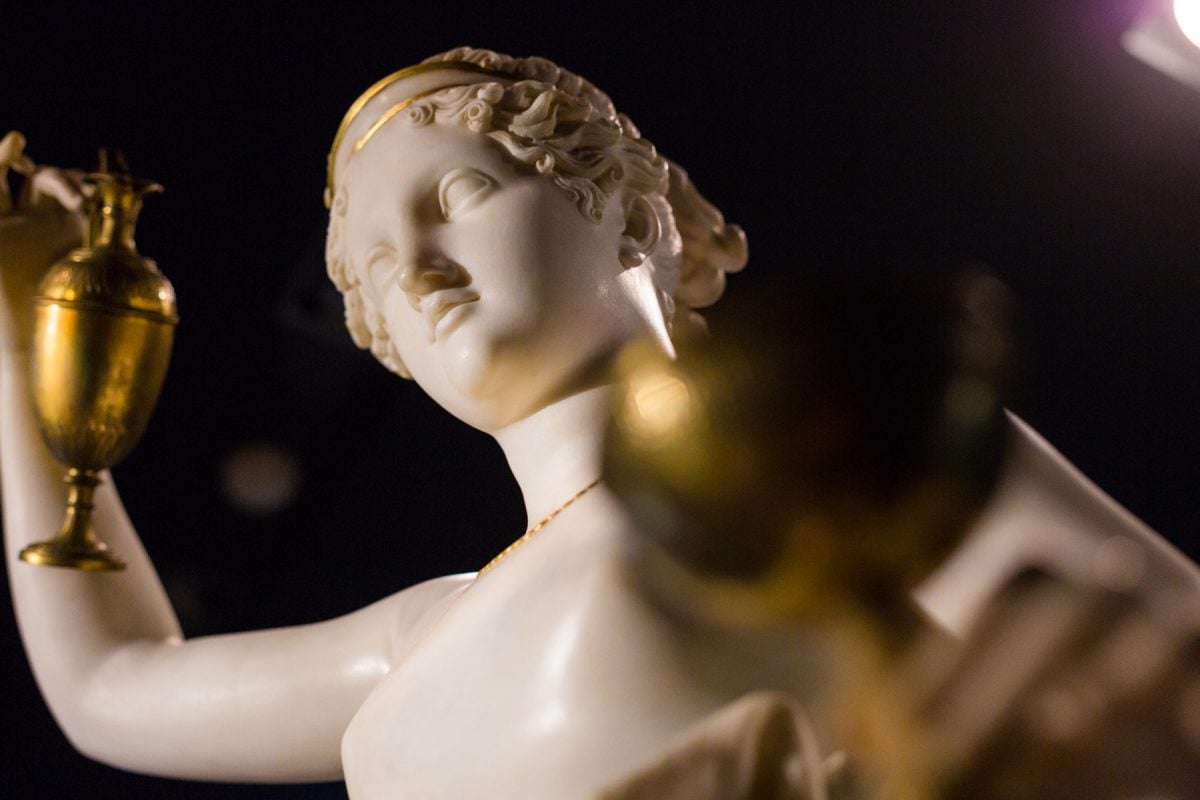
There are four original versions of the statue by Canova. The Forlì version was commissioned by Countess Veronica Zauli Nardi Guarini to enhance the grandeur of her residence, Palazzo Guarini Torelli.
The artwork depicts the goddess Hebe, shown advancing with a light, almost dance-like step, her elegant hairstyle adorned with a diadem, gently stirred by a breeze. A symbol of adolescence, the goddess embodies the miracle of perfect and untouched beauty, captured at the moment when her form begins to blossom.
From the moment it was created, this sculpture was praised for its modernity, setting forth an ideal of beauty that perfectly aligned with the aesthetic sensibilities of the time.
Today, the statue is displayed at the Musei di San Domenico in Forlì, in a circular room designed to evoke the octagonal hall of Palazzo Guarini Torelli. This layout allows the sculpture to be admired from every angle, highlighting the harmony of its forms.
Tip: No matter when you visit the Pinacoteca, make sure to check for the current exhibition—it’s definitely worth it!
Extra artwork in the area: In the adjacent Church of the Capuchin Friars’ Convent in Cesena, you’ll find the precious oil painting Saint Francis Receiving the Stigmata (1646), regarded as a true artistic treasure.
Piero della Francesca (Rimini)
Artist: Piero della Francesca
The unmissable masterpiece: Sigismondo Pandolfo Malatesta praying in front of St Sigismund (1451)
Where: Tempio Malatestiano (Rimini)
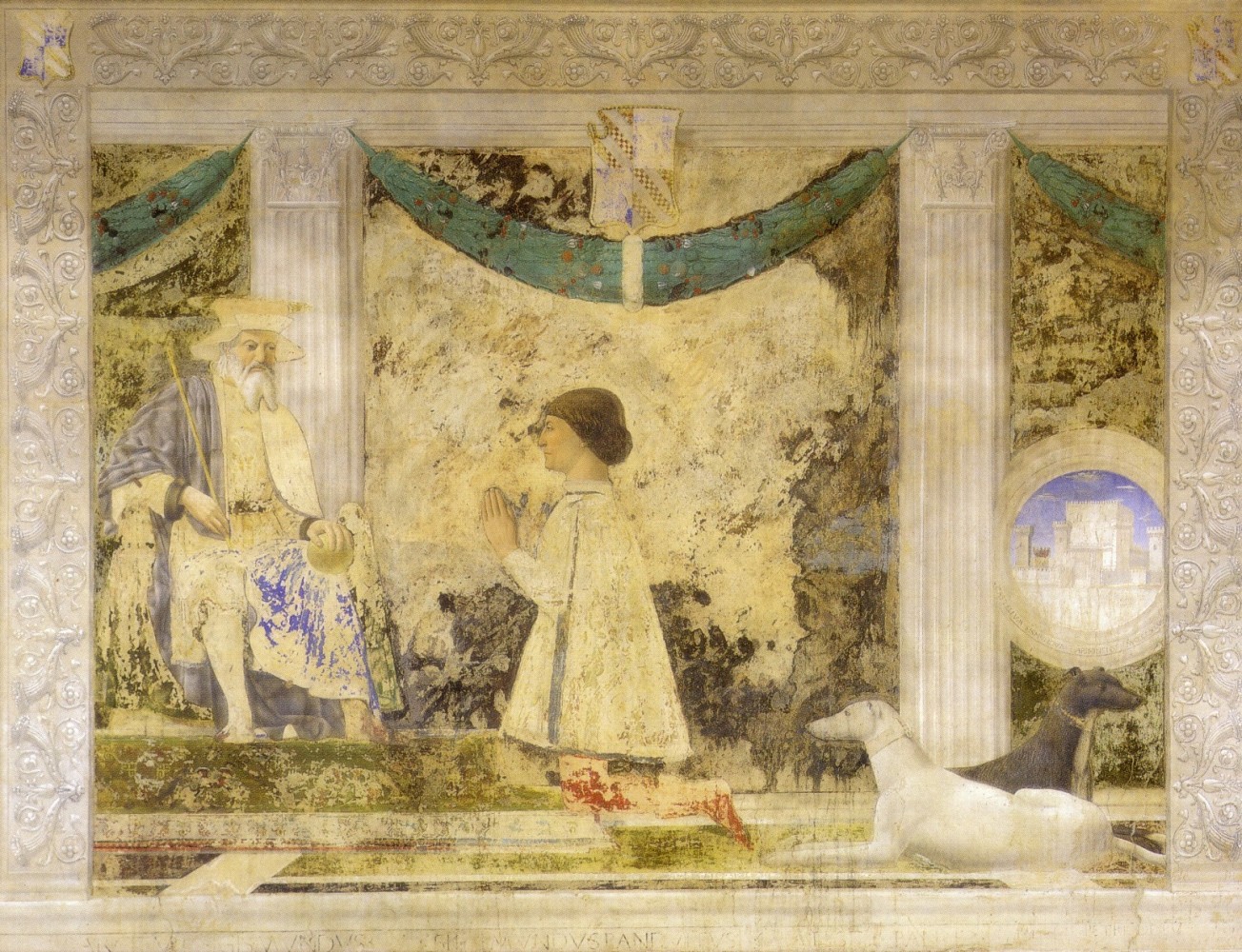
In the heart of Rimini, the Tempio Malatestiano houses one of the most celebrated frescoes of the Renaissance: Sigismondo Pandolfo Malatesta in Prayer before Saint Sigismund by Piero della Francesca. The artwork was commissioned by the condottiero Sigismondo Pandolfo Malatesta, who invited the artist to his court.
The fresco is located in the last chapel on the right of the altar, where visitors can admire the image of the condottiero in prayer, surrounded by powerful symbolism. The two greyhounds at his feet, one white and the other black, symbolize loyalty and vigilance, reflecting Sigismondo’s ideal political virtues.
This extraordinary work not only expresses an act of religious devotion but also celebrates the political power of the Malatesta family, merging faith and politics into a grand visual narrative.
Fun fact: The Malatesta Temple, designed by Leon Battista Alberti, is a prime example of how Renaissance architecture and art were used to express the prestige and legitimacy of the Malatesta family. Its interior, adorned with works by great masters, is a true treasure chest of art and history.
Extra artwork in the city: Don’t miss the magnificent Crucifix by Giotto, painted in tempera and gold on wood, located inside the cathedral. Also nearby, the Museo della Città offers a fascinating journey into the Malatesta court, with exhibits celebrating the grandeur of the Signoria through heraldry, medals, ceramics, and works by 15th-century artists such as Agostino di Duccio, Matteo de’ Pasti, Giovanni Bellini, and Domenico Ghirlandaio.
→ Discover more about Rimini: its historic center is a treasure trove of unique artistic landmarks
Author
You may also like
From Rimini to Urbino by bike: on the traces of Piero della Francesca
by Davide Marino /// June 27, 2017

Interested in our newsletter?
Every first of the month, an email (in Italian) with selected contents and upcoming events.
The Most Beautiful Churches and Cathedrals in Emilia-Romagna
by Davide Marino /// September 20, 2018
The Unesco Cities of Emilia-Romagna
by Davide Marino /// November 8, 2018
